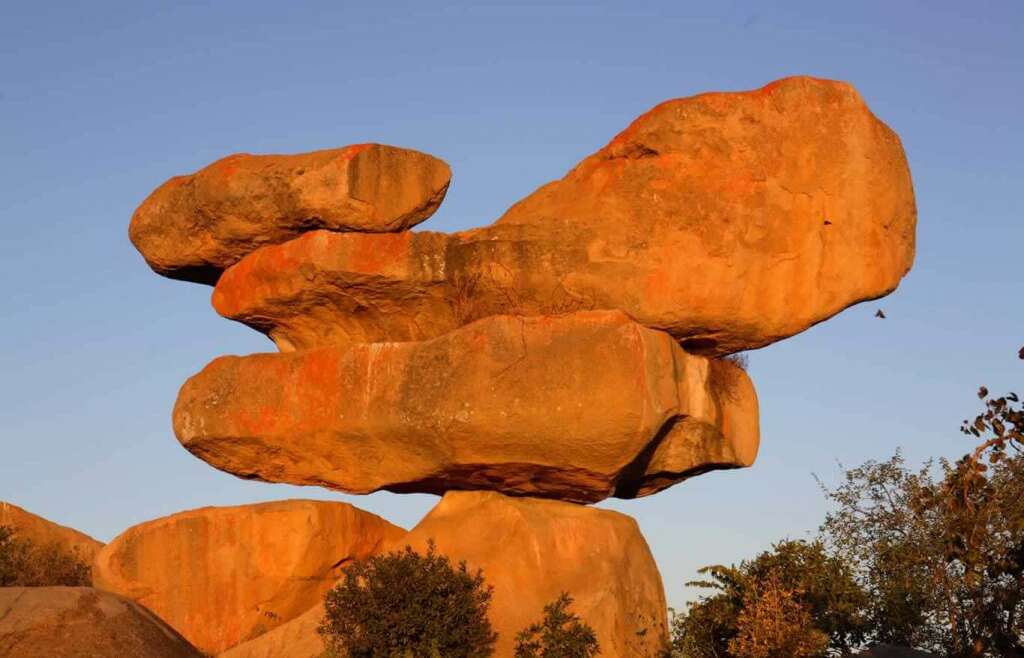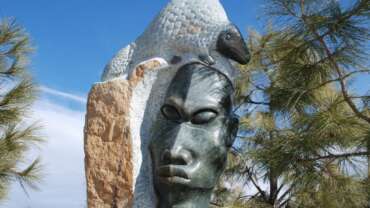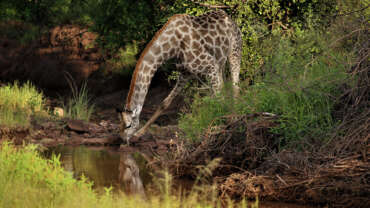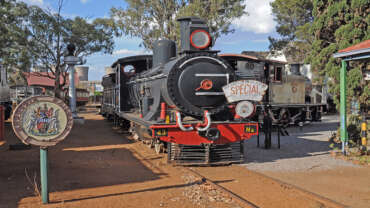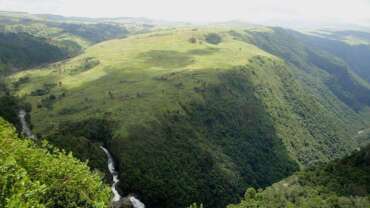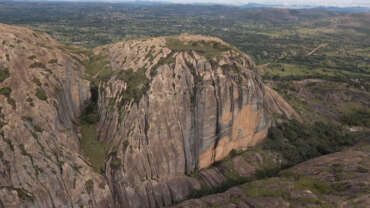Rocky Features of Zimbabwe
Domboshava Caves
Located about 30 km out of Harare, off the Borrowdale/Domboshawa Rd”, the Domboshava Caves is a must-visit for adults, children, students, artists, photographers and fitness lovers!!! Located in the Chinamora Communal lands, offering a magnificent 360º view of the surrounding countryside, the historical granite hill is a suitable location for a day-trip for recreational picnics, meditation, sundowners, religious get-aways or quiet walking trails
for you or your pets!!!
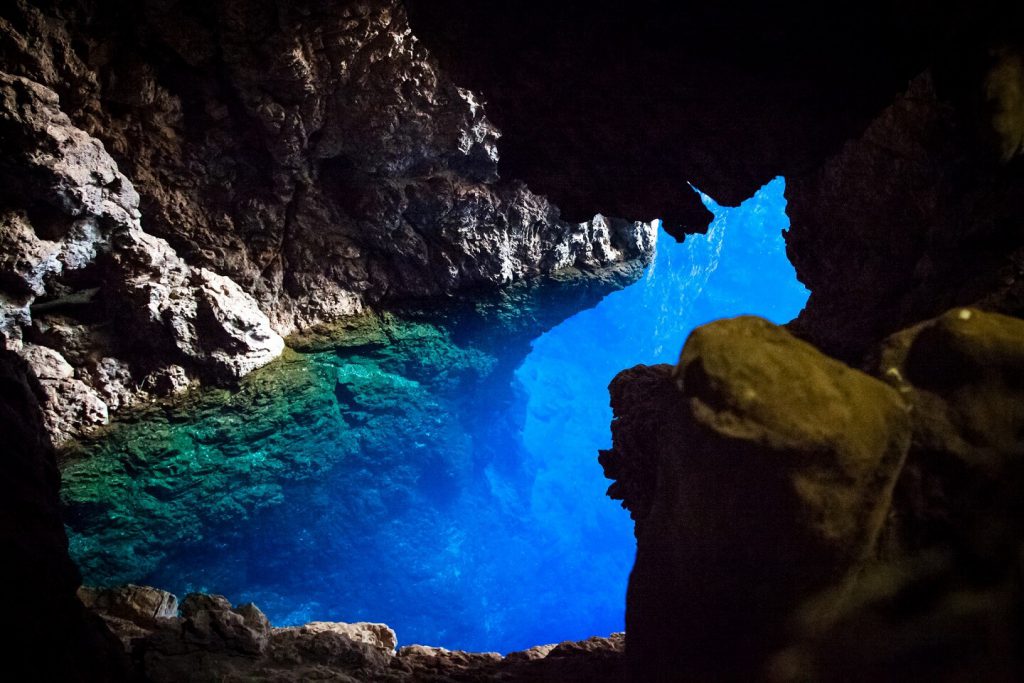
Chinhoyi Caves
Historically, the first white man believed to have discovered the Caves was Frederick Selous, the famous European hunter, during his wanderings in 1887.
It was believed that prior to that the Caves were being used as a stronghold by an outlaw called Nyamakwere who murdered many victims by throwing them into the Silent Pool. The notorious Nyamakwere was eventually defeated and killed by a Headman called Chinhoyi who became a Mashona Chief, hence the name Chinhoyi given to the nearby town. Chief Chinhoyi and his followers used the Caves as a refuge from raiding tribes such as the Matebele. Until a few years ago the remains of Chief Chinhoyi’s grain bins could be seen in some of the underground passages.
The traditional name for the Caves is “Chirorodziva” which means the “Pool of the Fallen”. The name was derived from an incident which took place in the 1830s when the Angoni Tribe, who were moving northwards surprised people living near the Caves and flung them into the pool.
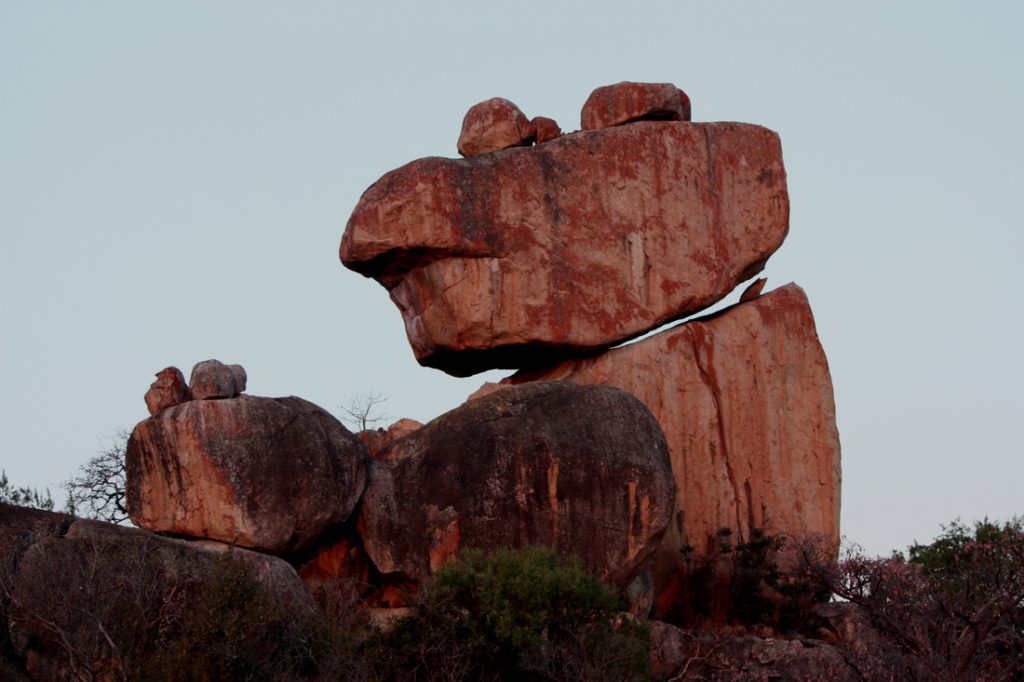
Matobo Hills
Huge granite masses – seamed, split, shaped and sculptured by time and the elements – form an array of giant whalebacks and castellated kopjes that cover 3000 square kilometers of Matabeleland South Province. Much of the country’s history has been written and played out within the confines of the Matobo Hills – from the time thousands of years ago when ancient bushmen used the granite faces as a canvas for their unique and extraordinary art, to more recent times, when black and white met in war and peace.
These are the Matobo Hills, located south of Zimbabwe’s second largest city, Bulawayo. Forty thousand years ago the caves and crevices carved out of these rocks became home to Zimbabwe’s earliest inhabitants, the “San”. Twenty thousand years later “San” artists began painting on the walls of caves and rock shelters, using special pigments and natural minerals that have survived the onslaught of climate and time.
Many caves contain superb galleries of Bushman paintings, one of which is Bambata, located no more than 10km from Big Cave Camp. Other Bushman paintings may be seen on the private wilderness in secluded caves and rock shelters.
Today the Matobo Hills are a place of peace; however this area is still held in reverential awe by local communities and ceremonies continue to be performed to assist in the making of rain.
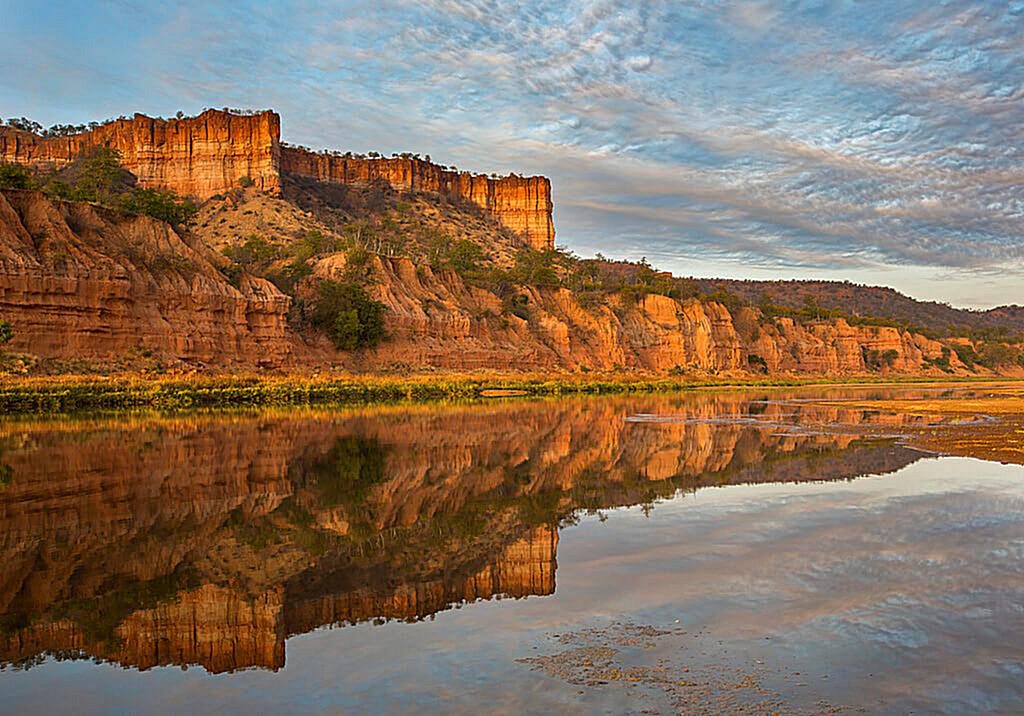
Chilojo Cliffs
One of the most prominent and enduring natural features of Gonarezhou National Park is the beautiful Chilojo Cliffs. These magnificent red sandstone cliffs have been formed through eons of erosion and overlook the scenic Runde River valley.



